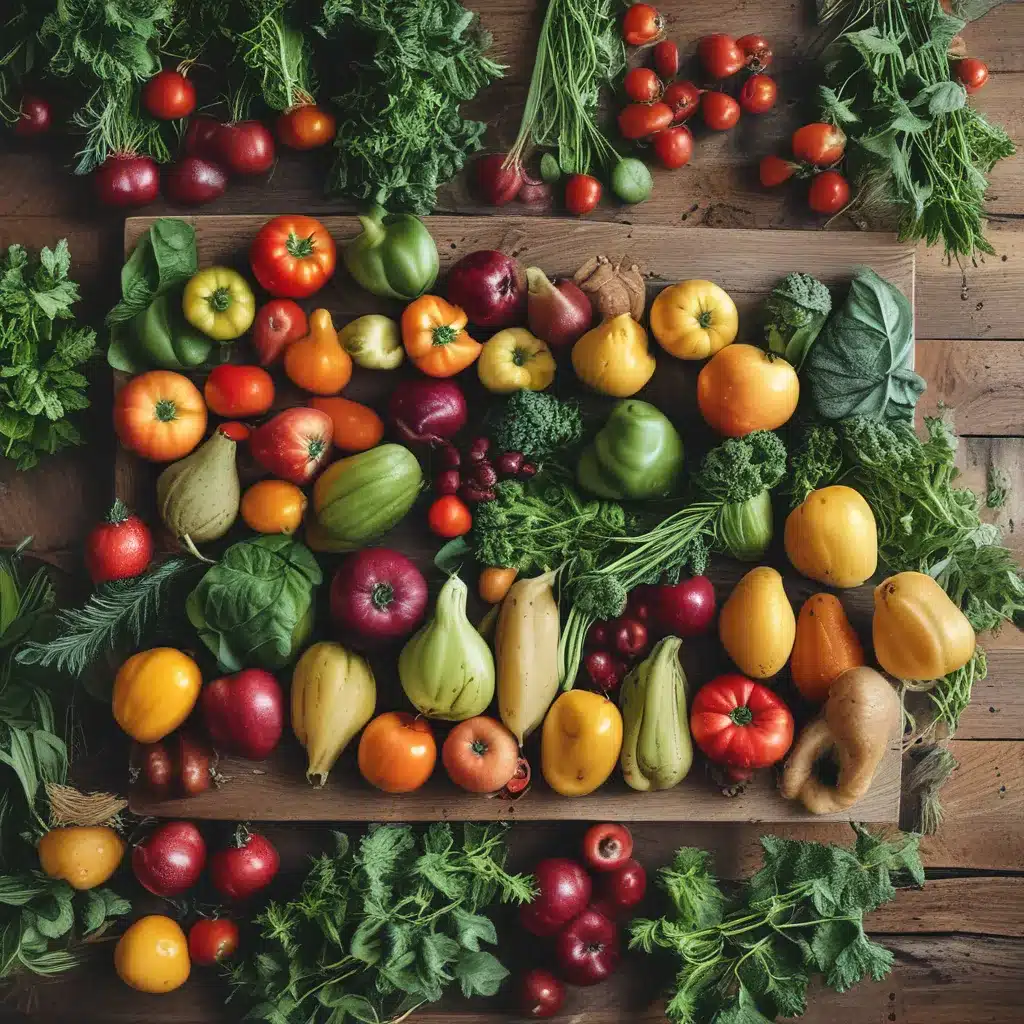
Ah, the thrill of a bountiful harvest – rows of plump tomatoes, a rainbow of crisp veggies, and bundles of fragrant herbs overflowing from the garden. It’s a gardener’s dream come true, but also a challenge to ensure none of that hard-earned produce goes to waste. Fear not, my fellow green-thumbed friends, for I’m here to guide you through the wonderful world of food preservation.
Freezing: Nature’s Pause Button
As the summer harvest season winds down, it’s time to dive into the exciting realm of food preservation. With a cornucopia of fresh fruits and veggies gracing our gardens, it’s crucial to make the most of this abundance. And let’s be real, who has the time (or energy) for canning these days? That’s where freezing and dehydrating come in as the dynamic duo of food preservation.
Freezing is like nature’s pause button – it allows you to capture the vibrant flavors and nutrients of your produce at their peak ripeness. By removing the moisture, you prevent spoilage and inhibit the growth of microorganisms, ensuring the preservation of both taste and nutrition. Imagine opening your freezer on a frigid winter day and being transported right back to the height of the growing season with a burst of garden-fresh flavor. Blueberries for your morning smoothie? Check. Basil for a homemade pesto? You bet!
Some of my favorite freezer-friendly finds include juicy berries, crisp peppers, and even shredded zucchini for baking. The process is simple: wash, prep, and flash-freeze in a single layer before transferring to airtight bags or containers. For leafy greens, try blanching them first to lock in that garden-fresh goodness. Just be mindful of those high-water-content veggies like cucumbers and lettuce – they might turn a bit mushy after thawing. But hey, that’s what soups and stews are for, right?
The Dehydrator’s Delight
If freezing is nature’s pause button, then dehydrating is the rewind feature. This preservation method removes the water content from your produce, effectively slowing down the growth of pesky microorganisms. The result? Lightweight, shelf-stable snacks and ingredients that retain their vibrant flavors.
Dehydrated fruits like apple slices and figs make for the perfect on-the-go treats, while herbs and veggies can be ground into flavorful powders for seasoning soups, stews, and beyond. The key is to slice your produce uniformly and dry it at the right temperature and duration to avoid that dreaded case of “hardening” on the outside while the inside is still moist.
One of my personal dehydrating favorites is homemade tomato powder. Just toss those extra cherry tomatoes into the dehydrator, and you’ve got a concentrated umami punch to sprinkle onto everything from roasted veggies to homemade pizza. Talk about a taste of summer all year round!
Canning: The Timeless Tradition
Now, I know I said canning might not be your first choice these days, but hear me out. While freezing and dehydrating are fantastic methods, there’s something to be said for the timeless tradition of canning. Not only does it allow you to preserve your harvest in a shelf-stable way, but it also gives you the opportunity to get creative with unique flavor combinations.
Think about it – a pantry stocked with homemade jams, pickles, and sauces, just waiting to be enjoyed. Not only is it incredibly satisfying, but it also makes for the perfect homemade gift (or sneaky way to share your garden bounty with friends and family). Plus, with a little bit of practice, canning can be a surprisingly simple and rewarding process.
Thornap
ple CSA has some fantastic resources to get you started, including step-by-step tutorials and delicious recipe ideas. Trust me, once you conquer that initial fear, you’ll be a canning pro in no time. And the best part? You’ll be able to savor the flavors of summer all year round.
The Whole-Harvest Approach
Now, I know what you’re thinking – with all these preservation methods, where do I even begin? The key is to take a whole-harvest approach and utilize a combination of techniques to make the most of your bountiful garden.
Start by assessing your stash and prioritizing which items need to be preserved first. Those delicate berries and greens? Grab the freezer bags. That bumper crop of tomatoes? Time to fire up the dehydrator. And don’t forget about canning – those jars of homemade salsa or pickled veggies are perfect for sharing (or hoarding for yourself).
The beauty of this multifaceted approach is that you can truly enjoy the fruits (and veggies) of your labor all year round. Imagine cracking open a jar of your signature tomato sauce in the dead of winter, or whipping up a batch of blueberry smoothies with produce you preserved at the peak of summer. It’s like having your own personal farmer’s market, right in your kitchen.
Reaping the Rewards
As you dive into the wonderful world of food preservation, remember that the process is just as rewarding as the end result. Not only are you reducing food waste and embracing sustainable living, but you’re also treating yourself to the ultimate garden-to-table experience.
So, roll up those sleeves, fire up those dehydrators, and get ready to preserve the flavors of summer. Your future self will thank you when they’re savoring that homemade pesto or crunching on a handful of dried apple slices on a cold winter day. And who knows, you might even find a new favorite hobby in the process – one that allows you to truly savor the bounty of your Thornap
ple CSA box all year long.
Happy harvesting and preserving, my fellow garden enthusiasts!



